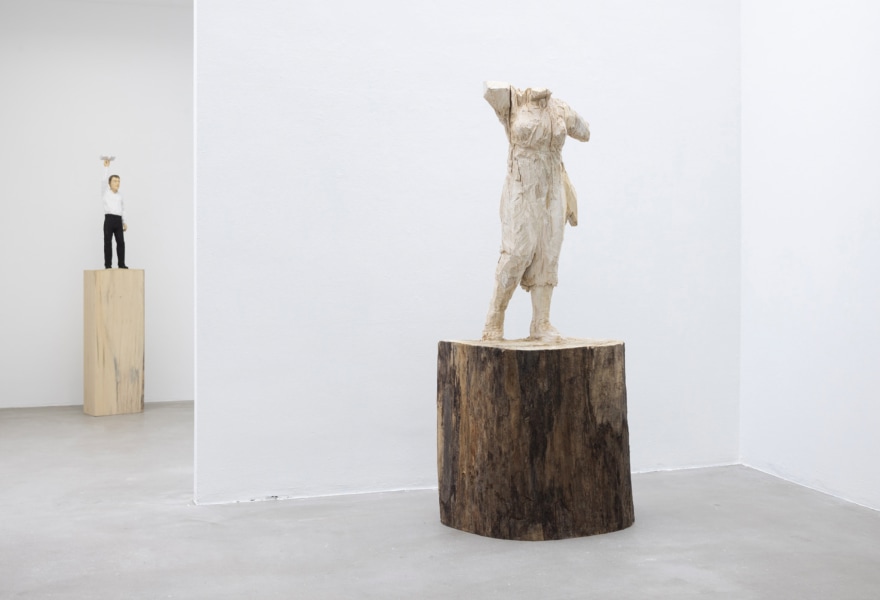27 september 2024, Flor Linckens
Stephan Balkenhol: wood as a mirror of the human form
Until 26 October, AKINCI in Amsterdam presents a solo exhibition featuring new works by Stephan Balkenhol, created specifically for this occasion. The German sculptor’s roughly hewn and instantly recognisable figures display ambivalent expressions — are they gazing into the distance, or turned inward? — often evoking a sense of contemplation and connection in the viewer. His oeuvre is a continuous exploration of the human form and its sculptural possibilities.
Balkenhol’s work stands out for several reasons. He was one of the first contemporary sculptors to return to figuration in the late 1970s, at a time when the art world was predominantly focused on abstract, minimalist and conceptual approaches. Additionally, his work is renowned for its craftsmanship, created without the intervention of assistants and with minimal use of machinery.
Humans almost always take center stage in his sculptures, though he occasionally ventures into the animal kingdom. His figures depict ordinary people in simple clothing, often devoid of overt emotion. Balkenhol avoids excessive detail and complexity, lending his works a certain calm, universality and serenity. This restraint makes his archetypal figures accessible, inviting the viewer to imbue them with their own interpretations. Balkenhol also plays with scale, crafting heads as large as a person or life-sized figures with absurdly long legs. The result is timeless and expressive sculptures that, despite their artisanal nature, do not convey a clear message but instead raise questions.
In a 2014 interview with Artdependence the artist remarked: “Figurative sculpture is often misused as a bearer of messages. In my vision my sculptures become a question, a mirror. And it is the viewer who fills it with meaning. Astonishingly enough, many beholders can hardly bear this ‘openness’. Both myself and my sculptures do need this element of tension, this mystery.”
Balkenhol’s work has been exhibited worldwide, often in public spaces, such as along the Thames in London, where his sculptures establish a deliberate dialogue with their surroundings. His work is part of the collections of institutions such as the Centre Pompidou, Tate, ARKEN Museum of Modern Art, Museum Voorlinden, the Museum of Contemporary Art Tokyo, MoMA, LACMA, the Art Institute of Chicago, Hamburger Bahnhof, the Peggy Guggenheim Collection and Kunstmuseum Den Haag. Balkenhol studied at the Hochschule für bildende Künste in Hamburg, where he was taught by other artists including Nam June Paik and Sigmar Polke. Since 1991, he has been a professor at the Staatliche Akademie der Bildenden Künste in Karlsruhe.


